Book with Confidence: Enjoy peace of mind — your 20% deposit is fully refundable up to 60 days before departure. See terms & conditions.
Self-Guided Leon to Santiago French Camino Bike Tour
Cycling the Camino de Santiago is an unforgettable journey that blends physical adventure with deep cultural and spiritual significance. Starting in the historic town of Astorga and ending in the sacred city of Santiago de Compostela, this route takes you across the diverse landscapes of northern Spain—through mountain passes, peaceful valleys, and charming medieval villages. It's more than just a bike ride; it’s a path rich with history, tradition, and the shared spirit of pilgrimage.
Along the way, you’ll conquer the legendary climb to Cruz de Ferro, the highest point of the route, and pedal through the lush vineyards of Bierzo. You’ll pass through iconic towns like Villafranca, known for its historic churches, and Samos, home to one of Spain’s oldest and most beautiful monasteries. The Camino is also a culinary adventure—sample regional specialties like Galician octopus in Melide or traditional pilgrim fare in cozy village taverns.
The final stretch takes you through quiet forest paths and sleepy hamlets, gradually building toward an emotional arrival in Santiago. As you roll into the Plaza de Obradoiro and set eyes on the majestic cathedral, the sense of accomplishment and connection—with history, fellow travelers, and yourself—is truly profound.
The Camino is suitable for riders with moderate experience, and the tour is thoughtfully designed to follow quiet country roads and paths, avoiding traffic where possible. Whether you come for the challenge, the culture, or personal reflection, cycling the Camino de Santiago offers a once-in-a-lifetime experience.
Self-Guided
casual hotels
Leon
Santiago de Compostela
moderate
46 km / 28 mi
7
Min. 2, Max. 12
Madrid-Barajas Airport (MAD)
Santiago–Rosalía de Castro Airport (SCQ)
Highlights
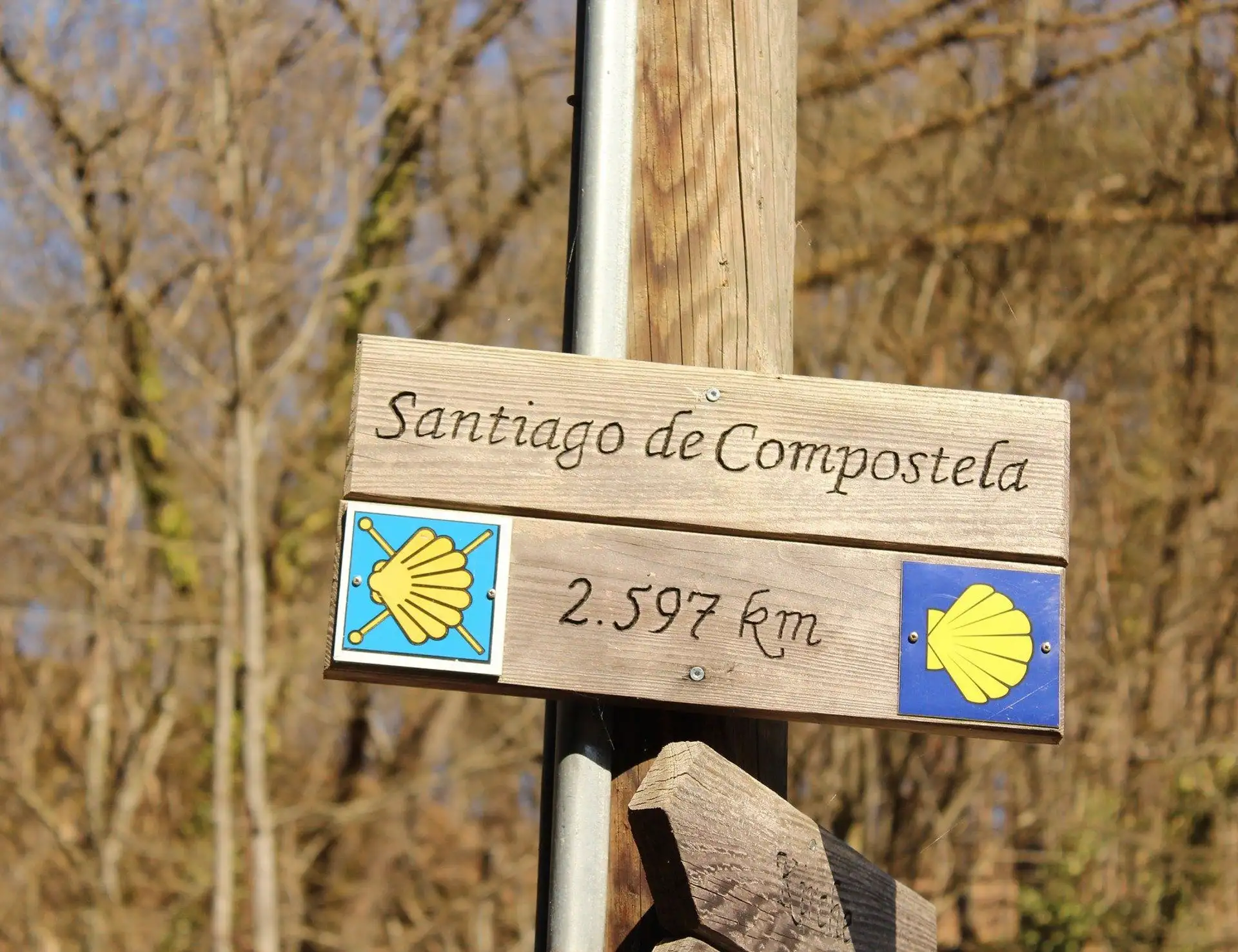
Ride the fabled Camino
Cycle the Camino de Santiago, considered one of the three sacred pilgrimage routes in Christendom.
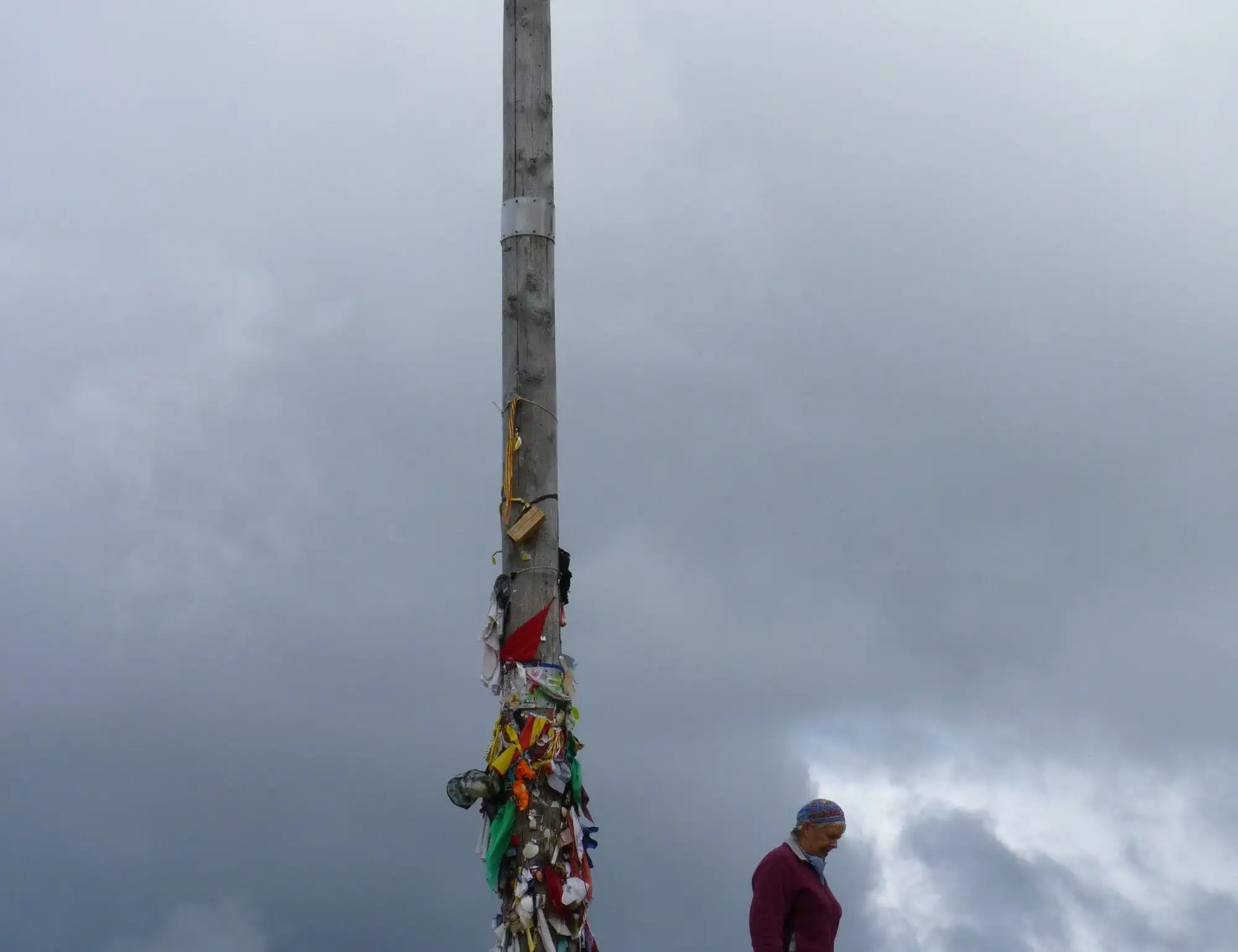
The Ascent to Cruz de Ferro
Conquering the climb to Cruz de Ferro is both a physical and symbolic highlight. This historic iron cross, where pilgrims traditionally leave a stone to represent burdens or prayers, offers sweeping views and a powerful sense of purpose—marking one of the most iconic moments of the Camino journey.
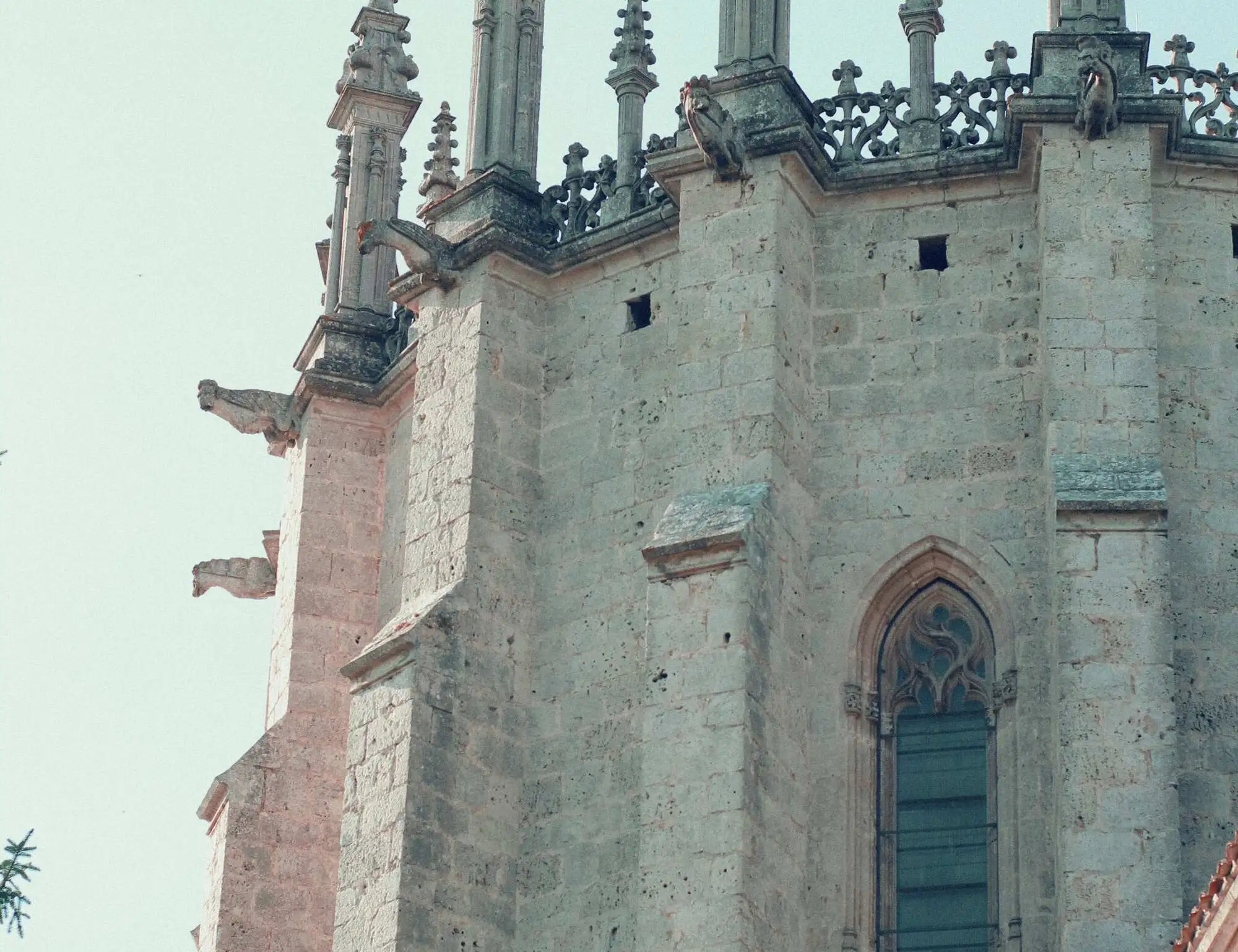
The Monastery of Samos
Nestled in a serene valley, the Benedictine Monastery of Samos is a spiritual gem. Its ancient cloisters and peaceful setting offer a moment of quiet reflection. Visiting this sacred site after descending from O’Cebreiro adds depth and tranquility to your cycling pilgrimage experience.
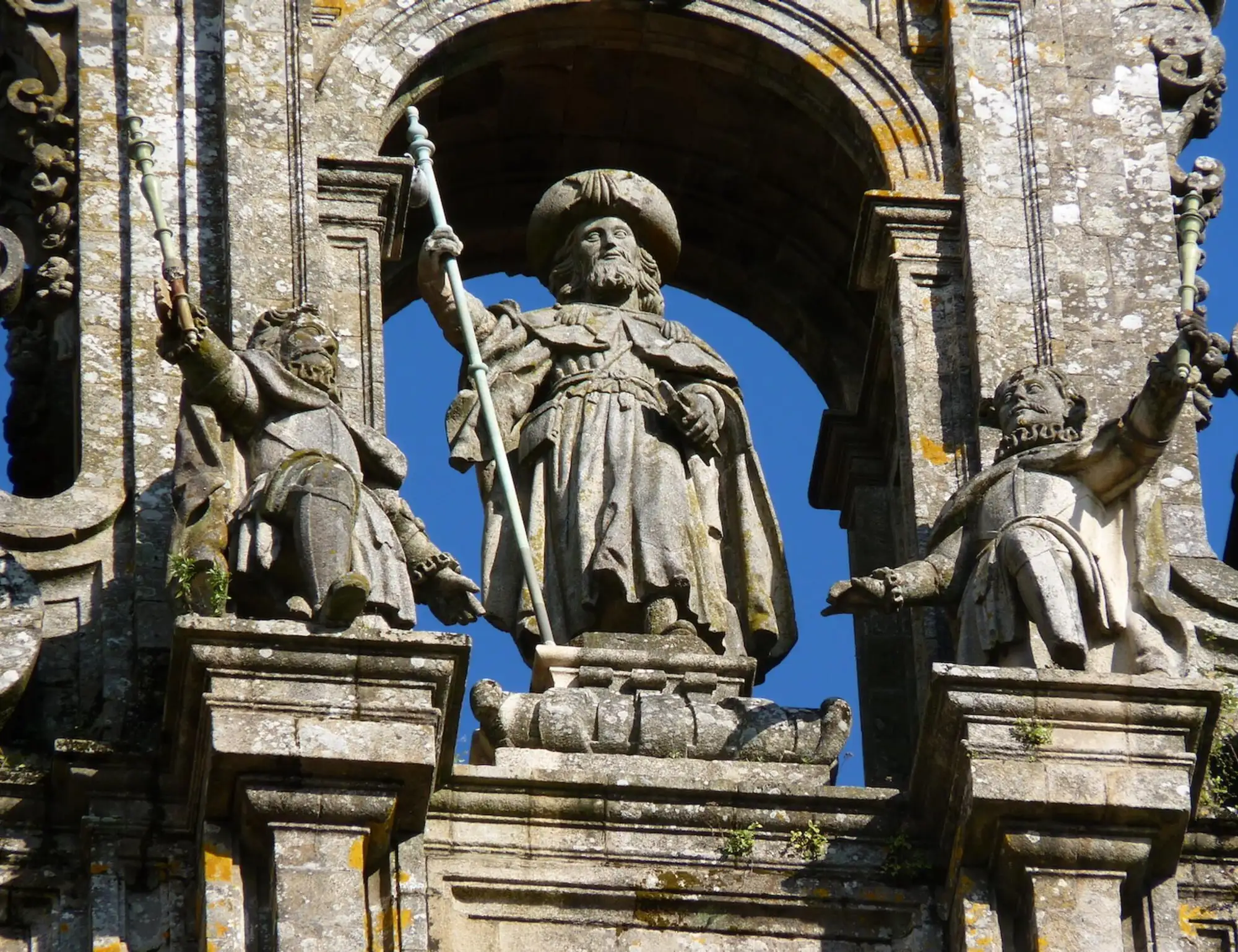
Arrival in Santiago de Compostela
Riding into the Plaza de Obradoiro and standing before the majestic cathedral is a deeply emotional moment. Surrounded by fellow pilgrims, you’ll feel a sense of achievement, community, and awe. It’s the perfect, unforgettable ending to a journey filled with beauty, challenge, and spiritual resonance.
Itinerary
Brief Itinerary
Meals are indicated as B = Breakfast, L = Lunch, D = Dinner.
Listed hotels are subject to availability and may be replaced with similar alternatives of equal standard.
| Day | Place | casual Inns | Meals | Distance | Activity |
|---|---|---|---|---|---|
| DAY 1 | Leon | Hospedería Fernando I | |||
| DAY 2 | Astorga | Hotel Astur Plaza | B | 49 km / 30 mi | cycling |
| DAY 2 | Molinaseca | Hotel Palacio | B | 47 km / 29 mi | cycling |
| DAY 4 | Las Herrerías | Hotel O Cebreiro | B | 59 km / 37 mi | cycling |
| DAY 5 | Sarria | Hotel Roma | B | 47 km / 29 mi | cycling |
| DAY 6 | Palas de Rei | Hotel La Cabaña | B | 47 km / 29 mi | cycling |
| DAY 7 | O Rua | Hotel O Pino | B | 51 km / 32 mi | cycling |
| DAY 8 | Departure from Santiago de Compostela | B | 20 km / 12 mi | cycling |
Detailed Itinerary
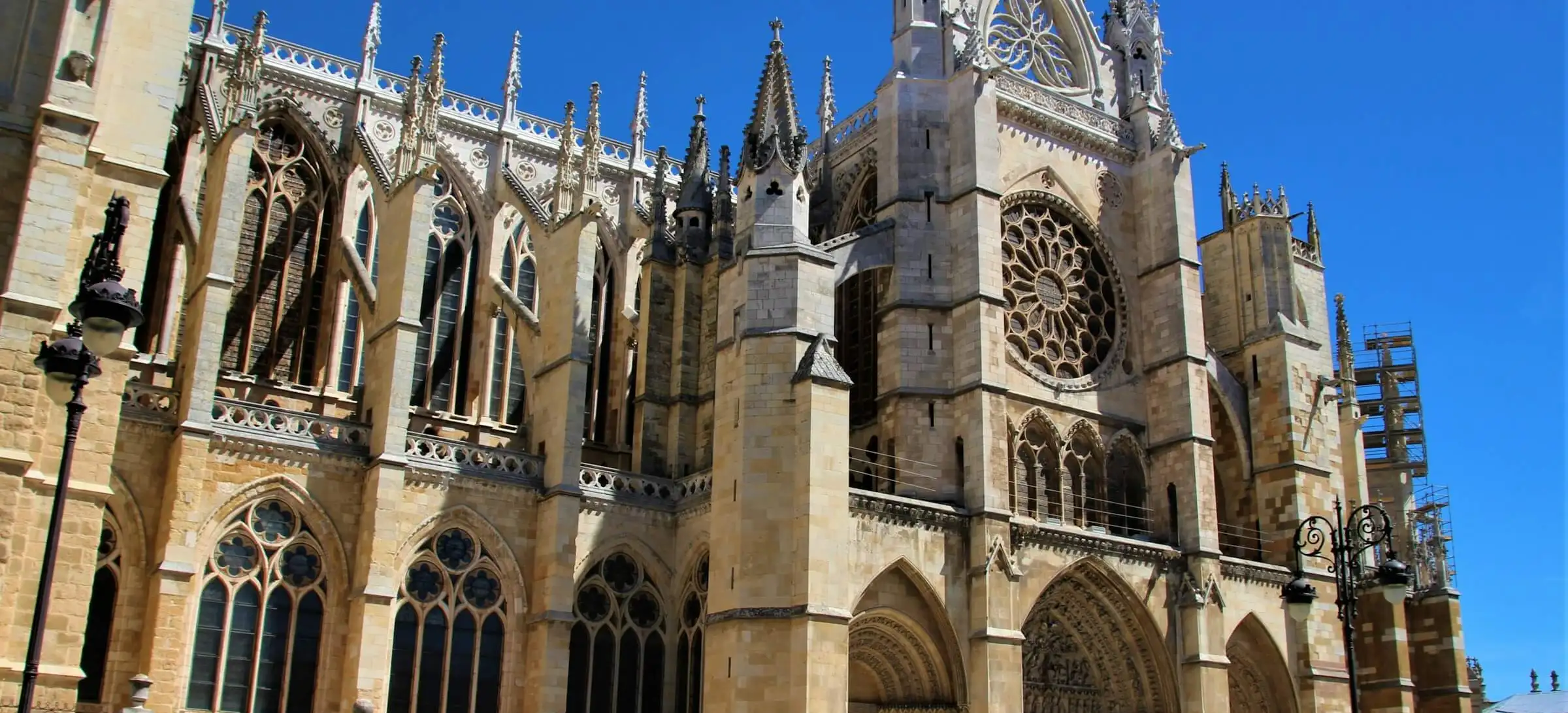
Day 1: Leon
Your journey begins in the historic city of León, one of the true jewels of northern Spain and a significant milestone on the Camino de Santiago. Founded by the Roman Legion Legio VI Victrix in 29 BC, the city’s name actually comes from Legio, meaning “legion,” rather than the lion it sounds like in modern Spanish. Over the centuries, León flourished as a key stop for pilgrims, blending its Roman roots, medieval grandeur, and lively Castilian spirit.
Take time to stroll through the beautifully preserved old town, where cobbled streets open onto elegant plazas and centuries of history unfold at every corner. The highlight is undoubtedly the Gothic Cathedral of Santa María de León, famous for its breathtaking stained-glass windows, among the finest in Europe, which bathe the interior in a kaleidoscope of color and light. You might also visit the Basilica of San Isidoro, a Romanesque masterpiece that houses the royal pantheon and its remarkable frescoes.
As evening falls, head into the Barrio Húmedo, León’s buzzing old quarter, known for its maze of narrow streets lined with tapas bars and wine taverns. Sample local specialties like cecina (cured beef), morcilla leonesa (spiced blood sausage), and a glass of robust Bierzo wine.
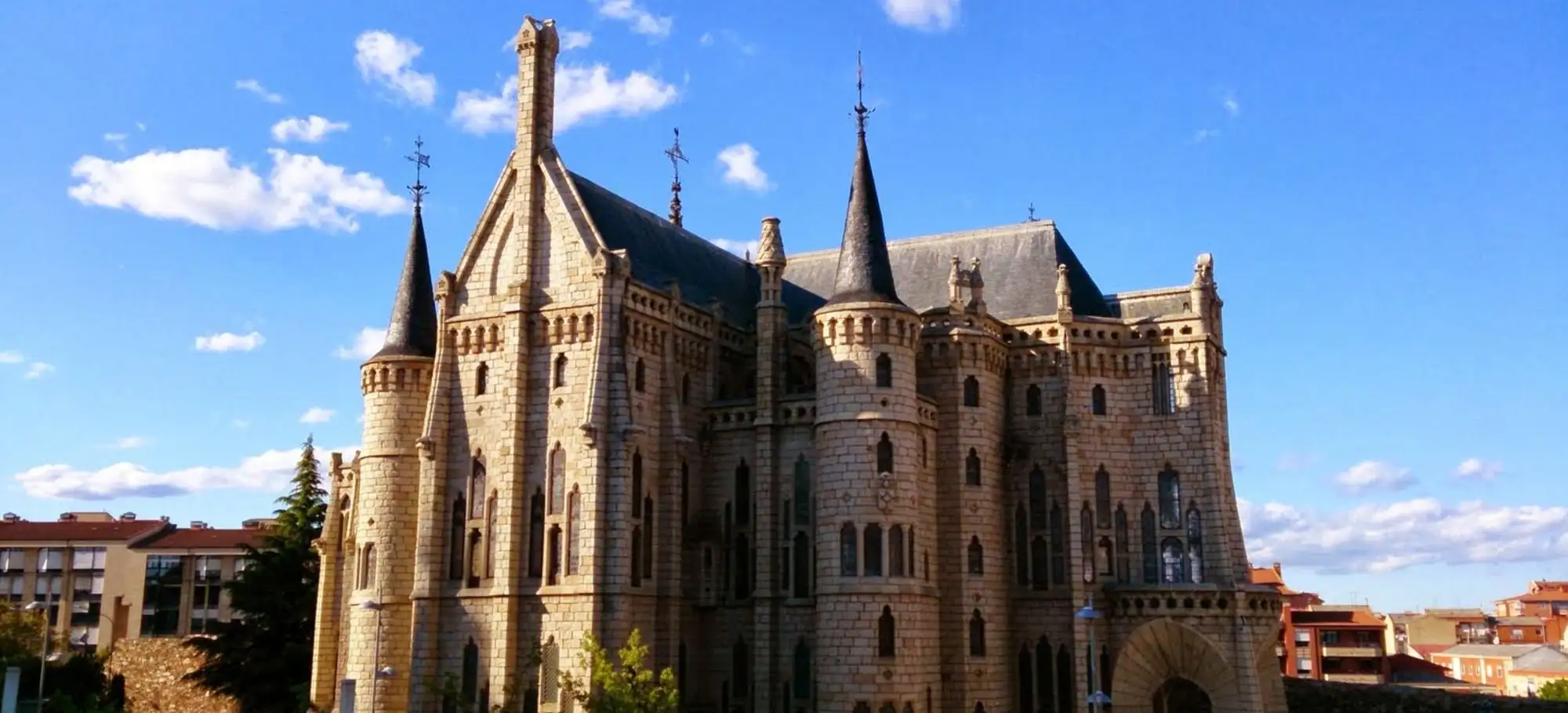
Day 2: Astorga
Your first day on the bike begins with a gentle rhythm as you leave León behind and pedal into the wide-open Castilian countryside. The path unfolds through peaceful villages and undulating farmland, where golden wheatfields stretch to the horizon and the scent of wild herbs drifts in the air. The terrain offers soft ups and downs, ideal for settling into the pace of the Camino and enjoying the quiet beauty of northern Spain’s meseta.
As you ride westward, the scenery gradually grows greener and more varied, signaling your approach to the foothills that lead toward Galicia. Small hamlets and pilgrim rest stops dot the route — timeless places where walkers and cyclists alike pause to share stories over coffee or a slice of tarta de Santiago.
Your destination, Astorga, rises elegantly from the plain, a city steeped in Roman and medieval history. Once home to the Roman Legion Décima Gémina, Astorga later became an important bishopric and a vibrant stop for Camino pilgrims. Take time to explore its remarkable monuments, from the imposing Cathedral of Santa María to the whimsical Episcopal Palace, one of Antoni Gaudí’s early architectural masterpieces — a fairytale-like structure blending neo-Gothic and modernist style.
In the evening, wander through the old quarter and savor local specialties such as cocido maragato, a hearty regional stew — the perfect reward after your first full day on the Camino.


Day 2: Molinaseca
Today’s ride takes you deep into the Maragatería region, a land of stone villages, ancient traditions, and rugged beauty. Leaving Astorga behind, the landscape transforms as you climb from the wide Castilian plains into wooded hills and mountain passes, where oaks, chestnuts, and broom bushes line the quiet road.
You’ll pass through Castrillo de los Polvazares, one of Spain’s most beautiful villages, famous for its red-stone houses and perfectly preserved Maragato architecture. From there, the ascent continues gently but steadily toward the Cruz de Ferro (Iron Cross) — the highest and most symbolic point of the Camino Francés, standing at around 1,500 meters (4,920 ft) near the hamlet of Foncebadón.
At the summit, pause for a moment at the simple wooden pole topped with its iron cross, surrounded by a mound of stones left by pilgrims over centuries. Many riders bring a small stone from home to leave here — a traditional gesture of letting go of burdens or intentions for the journey ahead.
From the Cruz de Ferro, an exhilarating descent unfolds into the valley of El Bierzo, where the landscape softens and turns lush and green. Vineyards, chestnut groves, and fruit orchards welcome you to this fertile region — a gentle and rewarding end to a day rich in history, symbolism, and mountain beauty.


Day 4: Las Herrerías
Set off this morning through vineyard-covered hills as you ride toward the charming town of Villafranca del Bierzo.
Pause to explore its historic center, including the Church of Santiago, where ancient tradition allowed weary pilgrims unable to finish their journey to receive their blessings.
From Villafranca, the route follows the winding Valcarce River, taking you deeper into the lush Bierzo valley. You'll pass small farming villages and quiet woodlands, the peaceful countryside accompanying your every turn. As the mountains draw nearer, you'll feel the landscape shift—the climbs grow steeper, the forests denser.
Tonight, you stay in the welcoming village of Las Herrerías, nestled at the foot of the fabled climb to O’Cebreiro. Rest well; tomorrow brings one of the Camino’s most iconic and rewarding challenges.

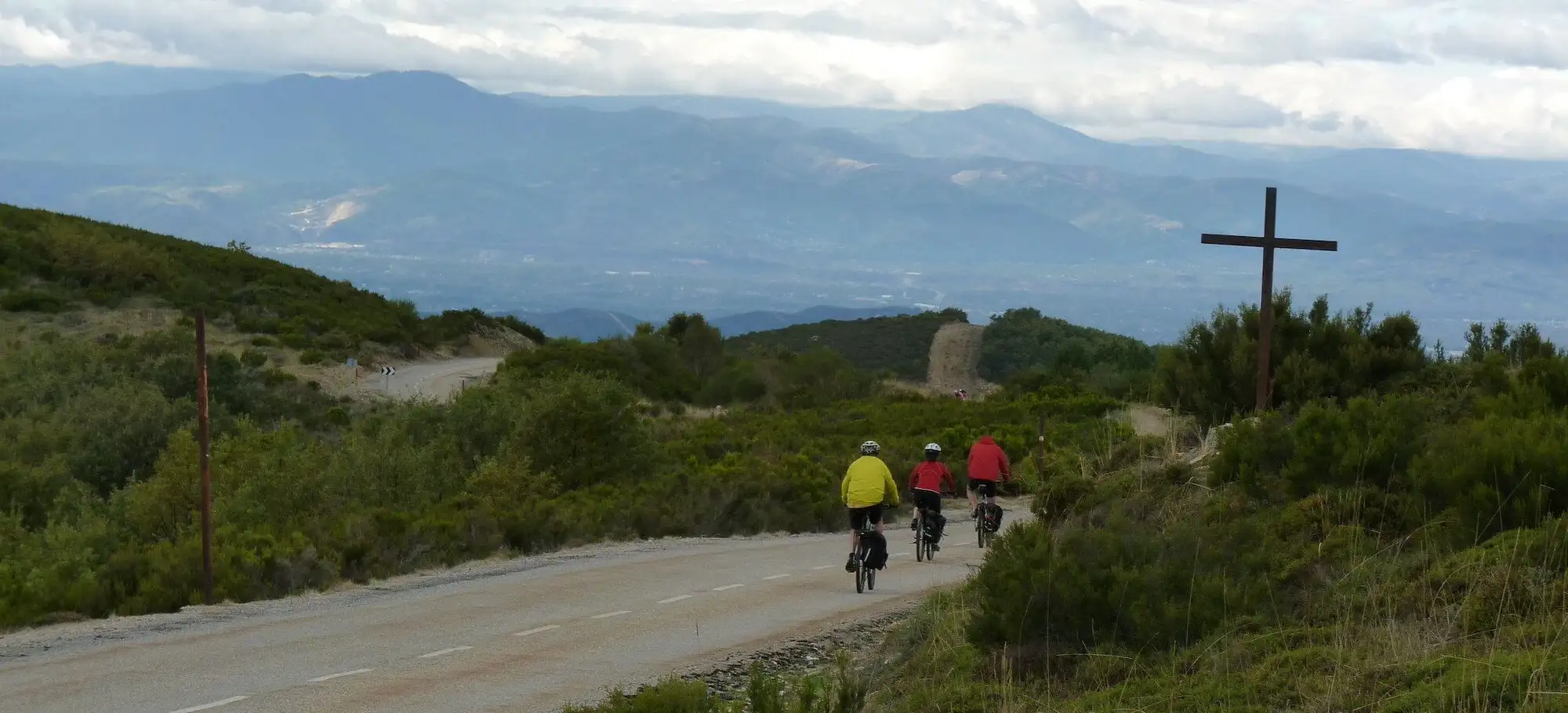
Day 5: Sarria
Today’s stage marks a memorable transition as you leave the sun-drenched valleys of El Bierzo and enter Galicia, where the scenery changes dramatically. The dry, open landscapes give way to misty mountains, dense chestnut forests, and rolling green pastures — a region affectionately known as “Green Spain.” The air feels fresher, the scent of wet earth and pine fills the road, and the countryside takes on a gentler, almost mystical character.
Your main challenge of the day is the climb to O Cebreiro, one of the legendary ascents of the Camino. This tiny stone village, perched at 1,300 meters, is renowned for its pallozas (pre-Roman thatched dwellings) and its deep spiritual significance — it’s here that the first church on the Camino was built, and where pilgrims have sought shelter for centuries. From O Cebreiro, you’re rewarded with sweeping views across the Galician mountains before beginning a long, winding descent toward Sarria.
The town of Sarria is not only rich in history but also holds a special place in the pilgrimage: it’s the traditional starting point for those walking the final 100 km to Santiago, the minimum distance required to earn the Compostela certificate. Explore its heritage through the Tower of the Fortress of the Marquises of Sarria and the 13th-century Monastery of La Magdalena, both reminders of its medieval importance.
Sarria and its surroundings boast an impressive twenty Romanesque churches, scattered among peaceful hamlets and valleys — a testament to the enduring spirit of the Camino that pulses through this region.

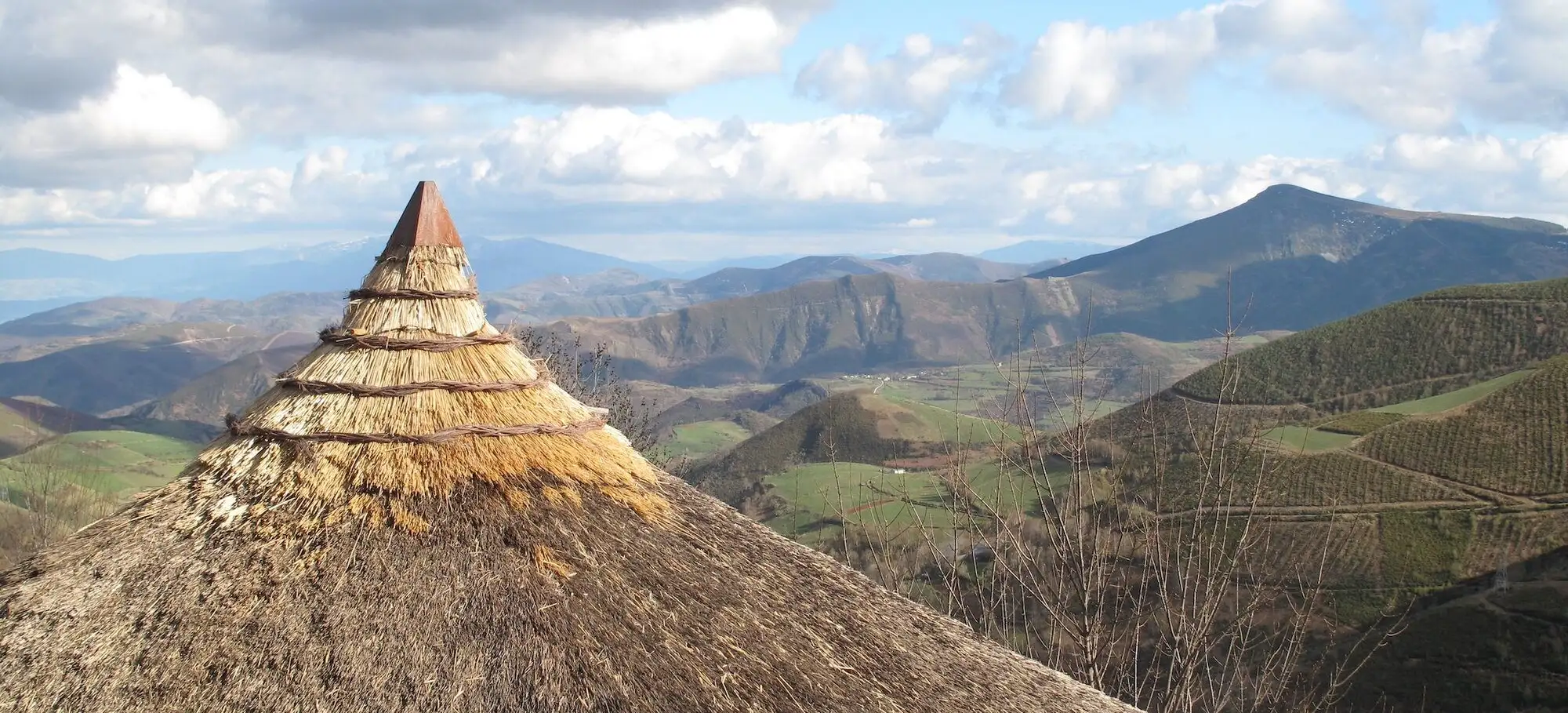
Day 6: Palas de Rei
Today’s ride takes you deep into the rural heart of Galicia. Leaving Sarria, you’ll cycle along age-old stone paths, rolling through emerald hills dotted with farmhouses and sleepy hamlets. You’ll pass countless “horreos,” traditional Galician granaries raised on stone pillars, a charming symbol of this region’s agricultural heritage.
The terrain is undulating but gentle, offering stunning countryside views around every bend. You’ll share the trail with fellow pilgrims walking toward Santiago, all united by a common spirit of discovery and reflection.
As the afternoon sun warms the fields, you’ll reach Palas de Rei, a small, welcoming town known for its strong Camino traditions. Celebrate another memorable day on the road with a relaxed evening, knowing you’re getting ever closer to Santiago’s spires.


Day 7: O Rua
As the journey nears its end, today’s ride captures the true spirit of the Camino, a day filled with encounters, camaraderie, and the hum of shared purpose. Leaving Palas de Rei, the route winds through shady eucalyptus forests, rolling farmland, and tiny stone hamlets, where pilgrims from across the world converge on their final stretch toward Santiago de Compostela.
The trail is alive with greetings of “Buen Camino!” as walkers and cyclists exchange smiles, encouragement, and stories. This sense of unity, so unique to the Camino, makes today’s ride an unforgettable experience that will linger long after the journey ends.
Along the way, you will pass through some of the most emblematic towns of the final stages, including Melide and Arzúa. Melide is renowned for its centuries-old pilgrim traditions and its celebrated dish, Pulpo a la Gallega (Galician-style octopus), served tender and drizzled with olive oil, paprika, and sea salt. Be sure to stop at one of its classic pulperías to taste this regional favorite; it is a rite of passage on the Camino.
The day ends in O Rúa, a peaceful hamlet surrounded by green hills and meadows. It is a quiet place to rest, reflect, and savor the anticipation of what awaits tomorrow, the final ride into Santiago de Compostela.


Day 8: Departure from Santiago de Compostela
The last leg of your pilgrimage is here! With excitement in the air, pedal the final kilometers through shady forests and tiny hamlets.
As you crest Monte do Gozo, the first glimpse of Santiago’s cathedral towers appears on the horizon—a breathtaking and emotional moment. Rolling into the city, follow ancient stone streets to the grand Plaza de Obradoiro.
Here, standing before the magnificent Cathedral of Santiago de Compostela, you’ll feel a rush of joy, pride, and gratitude. Whether it’s the culmination of a personal journey or simply the love of cycling and adventure, reaching Santiago is an experience that stays with you forever.

Ready to plan your adventure? Download a print-ready detailed itinerary.
Map
Dates and Prices
Book with Confidence: Enjoy peace of mind — your 20% deposit is fully refundable up to 60 days before departure. See terms & conditions.
Single Supplement
From US $440
E-Bike Upgrade
From US $120
Couldn't find a trip with convenient dates?
Open your date as a join-in tour or customize further as a private one.
Essential Info
Inclusions
LODGING
All hotels as mentioned in the tour details or similar (subject to availability).
bike
Immaculately maintained bike with helmet, suited to a terrain.
Luggage Transfer
Transportation of luggage from one hotel to another.
meals
Meals as per itinerary. Guests are given the opportunity to dine on their own so that they discover a location independently.
Exclusions
Beverages
Beverages such as alcohol, tea, coffee, juice at a hotel or restaurant.
Gratuity
Gratuities for your guide team are not included in the trip price.
Bikes
When you have a road and the thrill of a journey ahead of you, it’s imperative to have a good bike to enjoy it. Our fleet majorly consist of the below bikes as a part of this tour. However, sometimes due to height or availability constraints, we may provide a different but similar quality bike.
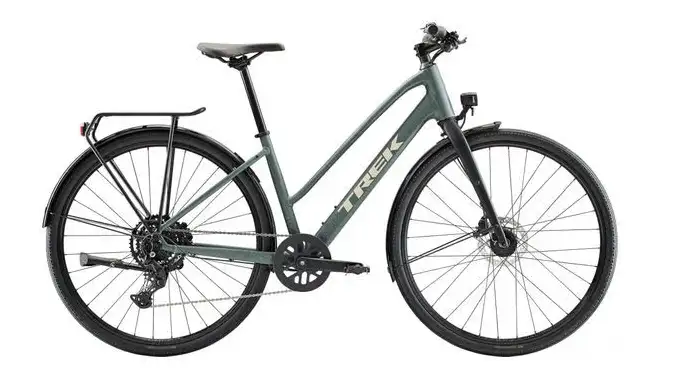
Trek Unisex or similar
Included in your trip price

Cube Katmandu or similar
Available at a surcharge
What to Expect
We want you to have a fantastic experience on your tour, so we aim to be upfront about what to expect along the way. Here are key details to keep in mind:
Please note that the Camino de Santiago is a pilgrimage route, and hotels along the way are meant to reflect this. All the hotels on this route are boutique, comfortable casual inns.
Arrival & Departure Details
Arrival
Your tour starts in Leon. The nearest domestic airport is the León Airport (LEN), offering domestic flights within Spain, mostly from Barcelon, Mallorca, and the Canary Islands.
Most international travelers prefer to fly to Madrid and take the train or bus directly to Leon. The jtrain ourney from Madrid to Leon by train takes approximately 2.5 hours, while by bus it takes around 4 hours.
Direct trains from Madrid to Leonare operated by Renfe, Spain's national railway company. Madrid's main train station for northern destinations like Leon is Madrid-Chamartín-Clara Campoamor, which can be reached from the international airport by taking the Cercania train line C1.
Departure
Your tour ends in Santiago de Compostela, which has an international airport called the Santiago–Rosalía de Castro Airport. It has direct flights to most major European capitals.
Weather
Cycling the Camino de Santiago is best done from April to October, when conditions are generally favorable.
In the spring months (April to June), you’ll enjoy cooler temperatures, green landscapes, and fewer crowds—perfect for a relaxed pace.
Summer (July to September) brings long daylight hours and vibrant energy, but it can get hot and busy, especially near Santiago.
Autumn, especially October, offers mild weather, golden countryside views, and a quieter experience as the season winds down.
January
Offseason
February
Offseason
March
Offseason
April
Mixed
May
Best
June
Best
July
Good
August
Good
September
Good
October
Good
November
Offseason
December
Offseason
Best
Good
Mixed
Offseason
What to Pack
Packing smart is essential for a safe and enjoyable cycling adventure. From essential biking gear to clothing and travel necessities, this guide ensures you're prepared for any terrain or climate.
Recommended Bicycling Clothes & Gear
- Bicycling shoes or stiff-soled sneakers.
- Padded cycling shorts.
- Short-fingered cycling gloves (personal gloves are ideal).
- Brightly colored cycling jerseys or synthetic T-shirts for visibility.
- Synthetic cycling socks.
- Sunglasses with UV protection.
- Personal helmet (recommended even though provided).
- Personal saddle (optional for added comfort).
- Rain jacket or windbreaker.
- Cycling water bottle (to reduce plastic waste).
Note: Helmets, gloves, and water bottles are personal items, so bringing your own is recommended for maximum comfort and hygiene.
Clothing
- Light, breathable fabrics like cotton or linen.
- Full-sleeved clothing for sun protection.
- Warm layers for chilly mornings and evenings (if traveling in winter).
- Comfortable footwear for non-cycling time.
- Bring a compact rain jacket in case of sudden weather changes.
- Ethnic or modest clothing for exploring towns and temples.
Other Necessities
- Toiletries: Basic hygiene essentials, including insect/mosquito repellent and sunscreen.
- Hand sanitizer and wet wipes.
- Plug socket adaptor.
- Binoculars for wildlife spotting or desert landscapes.
Pro Tips
- Pack light but plan for the varying temperatures: warm days, chilly evenings, and desert winds.
- Use brightly colored clothing for visibility on roads.
- Pack light to leave room for shopping.
Luggage
Please limit your luggage to one medium-sized suitcase and one carry-on bag. Mark your luggage with your name, address, and phone number.
Visa Information
Before venturing on your adventure, make sure you're equipped with essential travel advice, including security updates, local laws, and crucial passport and visa information. Start by visiting the official government website of your home country for accurate and reliable guidance:
- UK Residents: Stay informed by reviewing the Foreign, Commonwealth & Development Office (FCDO) Travel Advice.
- US Residents: Access vital travel tips and updates through the US Department of State Travel Advice.
- Australian Residents: Plan ahead with the latest updates on the Smart Traveller website.
- Canadian Residents: Find comprehensive travel and visa guidance on the Government of Canada's Travel Advice and Advisories.
- New Zealand Residents: Get practical travel advice on the New Zealand SafeTravel website
- Residents of Other Countries: Check with your government or local consulate for tailored travel advice and requirements.
Note: Passport and visa regulations can change at any time. Stay proactive by checking for the latest updates to ensure a smooth and stress-free journey.
Insurance
Medical insurance that covers medical costs in case of an accident during the trip is mandatory to participate in our tours.
We recommend to purchase adequate travel insurance in order to participate in our tours and protect yourself from unforeseen events. Our experience shows that guests who purchase travel insurance—including coverage for all activities on the itinerary, trip cancellation, interruption, delay, baggage damage, loss or theft, personal accident, death and repatriation costs, medical and emergency expenses (including Covid-19), and personal liability—travel with greater peace of mind.
Can I use my credit card insurance?
Yes, as long as it meets our requirements and provides adequate coverage. Ensure you have an emergency contact number and policy number available.
When should I buy travel insurance?
Purchase travel insurance as soon as you've paid in full or booked your flights.
Is proof of travel insurance required?
Yes. You must provide your insurer's name, policy number, and emergency contact via our reservation form. This is mandatory. If you cannot provide proof, you’ll need to purchase insurance before traveling with us.
Does Art of Bicycle Trips sell travel insurance?
We do not sell travel insurance directly, as we believe our customers should have the freedom to choose a policy that best suits their needs. However, we recommend Insured Nomads as a great starting point.
Frequently Asked Questions
This tour is on complete paved surfaces.
We provide an app-based navigation system that includes all your daily routes, points of interest, and important trip notes. You can download the app to your phone in advance, and we’ll share your login details before your trip.
Yes. Once the routes are downloaded, the app works completely offline, so you don’t need mobile data while riding. You can even use it in airplane mode, which helps conserve your phone’s battery.
To extend battery life further, we recommend reducing screen brightness and carrying a small power bank for longer days on the trail.
We do not provide GPX files separately. All routes are available within our navigation app, which is the most reliable and up-to-date source for your trip. Once you receive the login details for the navigation app — generally shared about one month before your departure — you can explore the routes and, if needed, also download the GPX files directly from the app for use with your personal Garmin or GPS device. We recommend getting familiar with the app and its features before your tour starts to ensure a smooth experience on the road.
For minor issues like punctures, the guests are provided with a self-repair kit, which includes tools to help them fix such minor issues. The exact contents of the kit depend on the type of bike, terrain and other factors, and will be communicated to you closer to your date of departure. However, usually such a kit includes tire levers, a spare tube, a patch kit, and a pump, allowing riders to fix the problem themselves. In some cases, the kit may only include a pump or a repair foam.
Self-guided riders are expected to be independent in handling these minor problems. While there are some bike shops along the route, they are limited. If you are unsure about how to repair a puncture, we recommend considering a guided or van-supported trip instead.
For major mechanical failures, such as a cable break, the guests can contact the emergency support number provided. The support team will help coordinate a solution, which could include dispatching a local mechanic, suggesting a nearby bicycle shop for repairs, or sending a vehicle to pick up the rider. Please note that all support services will be provided on a chargeable basis, and assistance may take time, so we advise being prepared for potential delays.
Yes, each rider will be provided with at least one pannier to carry personal items during the tour. Please note, road bikes do not support panniers.
Yes, we provide helmets. However, we recommend that guests try to bring their own helmets, as these are items of a personal nature.
Your luggage will be picked up at the reception of your hotel every morning by 9.00am.
It will be delivered to the next hotel before 5pm. Most of the time it is delivered in the early afternoon itself.
We recommend that you carry no more than 2 bags together weighing up to 15kgs for this trip. You can have one large bag, which contains all your clothing and gear needed for the trip, and one small bag that contains essential items you will frequently need such as passport etc. Please note that once a bag gets loaded in the luggage transfer vehicle, you may not have access to it till later in the evening when you reach the hotel for the night.
We provide local support by phone for any medical emergencies during the tour. Our local team will assist in coordinating medical care, guiding you to the nearest healthcare facility, and ensuring you receive the necessary support. The national emergency system is reliable and effective, and in the event of a serious accident, contacting them is highly recommended. However, due to our distance from certain areas, response times may be longer. We strongly recommend having appropriate travel insurance, and we will do everything we can to ensure your safety and well-being during an emergency.
Airport transfers are not included unless specifically mentioned in your trip inclusions.
For airport pickup, we recommend booking directly from the airport upon arrival — most airports have reliable taxi, shuttle, or app-based options.
For airport drop, please book a transfer through your last hotel — they can easily arrange it for you.
We focus on delivering exceptional experiences during your tour. For logistical simplicity and flexibility, we do not handle pre- or post-tour hotel bookings. However, we’re happy to share a list of recommended hotels near the starting and ending points of your trip so you can plan your stay independently.
The fitness level required for each trip is indicated by the "level" of the tour, which in turn is mentioned on each tour page right next to the price and the trip duration.
Easy: The terrain is mostly flat with a few gentle climbs.
Moderate: The terrain is either mostly flat or consists of rolling hills with a few challenging climbs. There could also be a few days with longer riding distances of up to 75 kms (45 miles)
Difficult: The terrain is mostly hilly with strong elevation gains and/or has long days on the bike. Such trips are recommended for intermediate to advanced cyclists.
Please note that we usually bike around 4-5 hours per day irrespective of the level of the trip.
You can exchange currency at the airport itself, or at ATMs in larger cities. Most commercial establishments will accept international credit cards for payments, though its good to carry some local currency with you at all times.
The meeting time on Day 1 is mentioned in your travel planner shared with you. You can arrive either on the morning of Day 1 depending on the meeting time, or book a pre-tour night to arrive a day earlier.
Reviews from our friends
You may also like
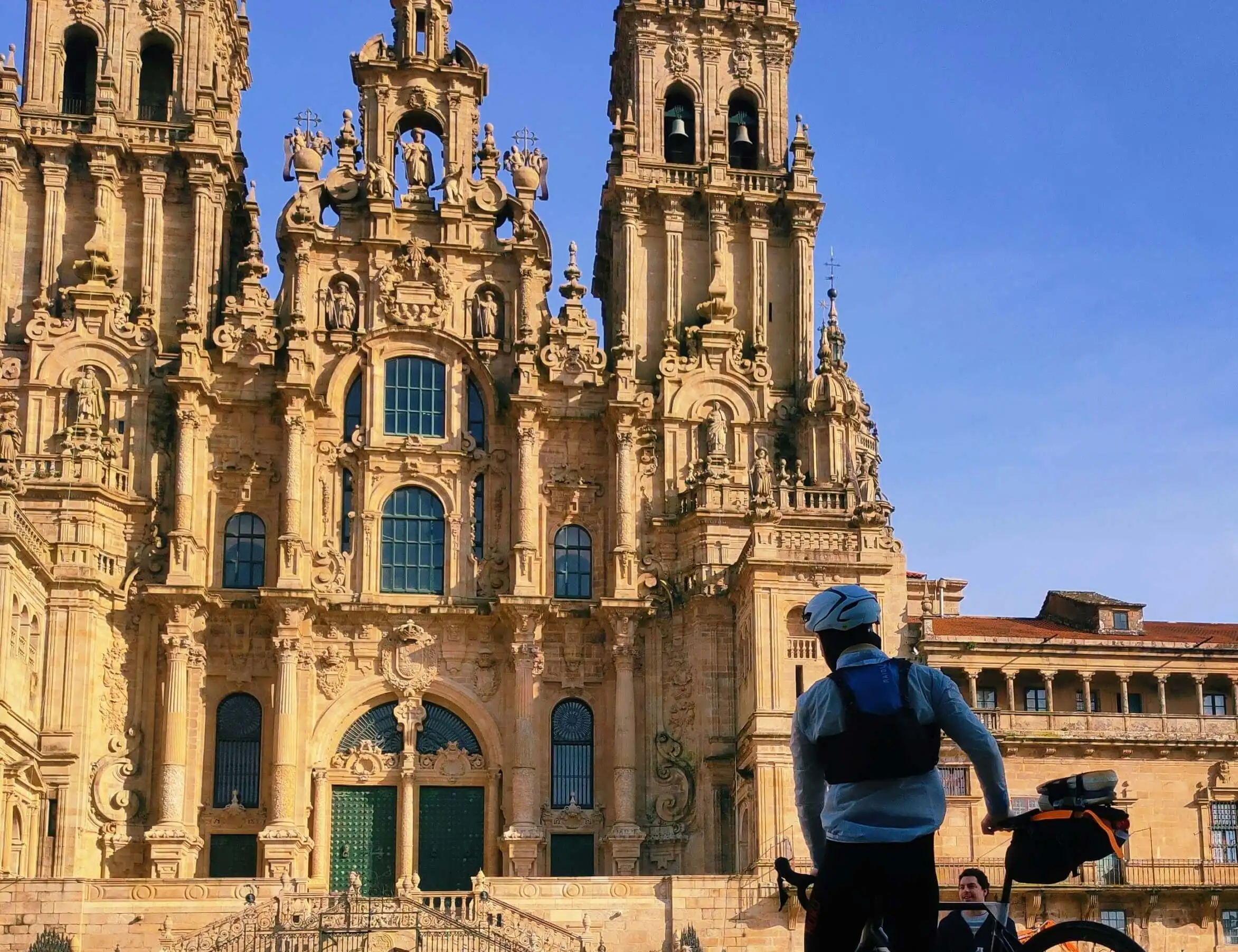
Popular
Self-Guided Porto to Santiago Coastal Bike Tour with Paradores
8 daysfrom$1,895/person
